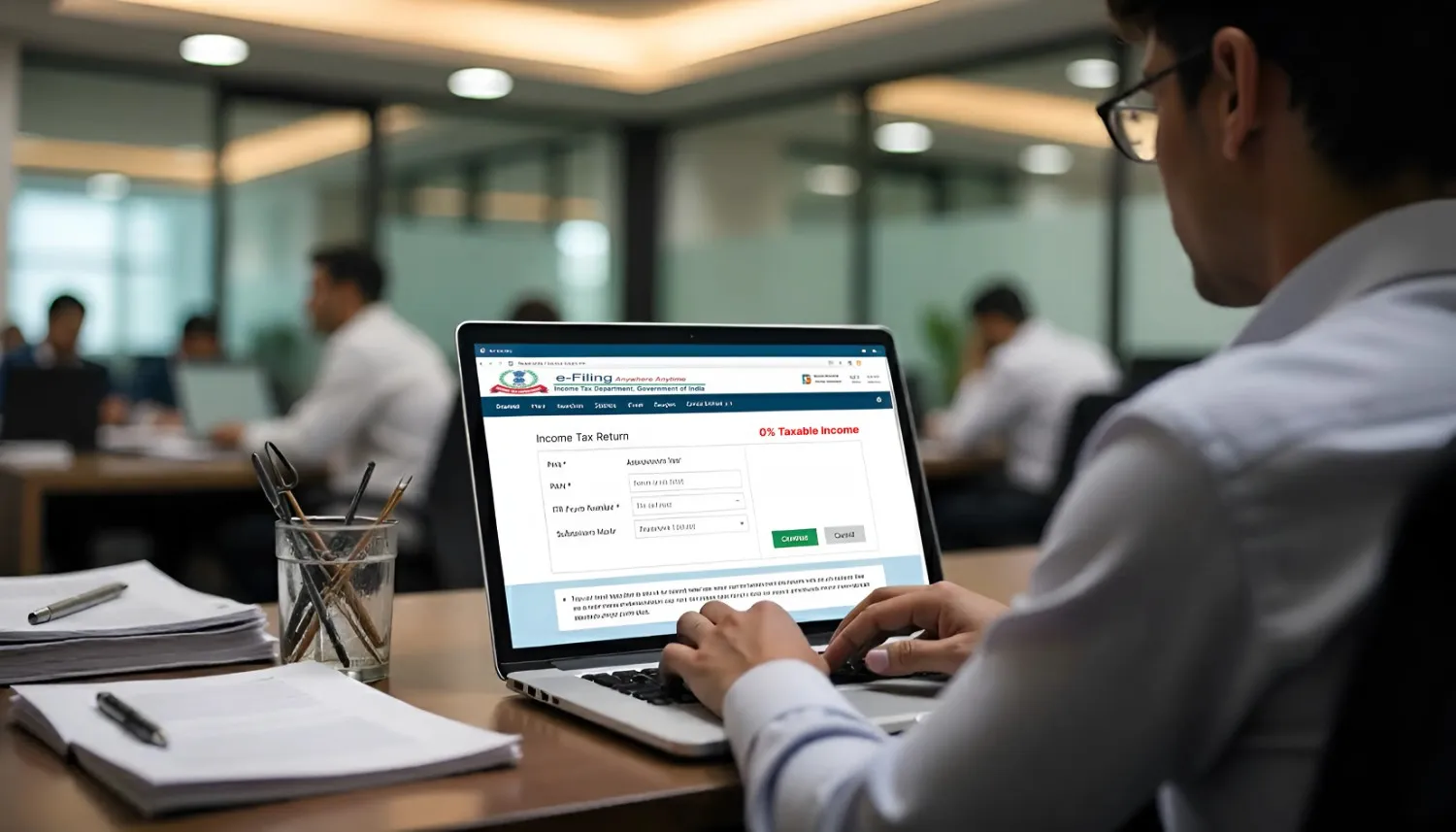
Buying your dream home is an exciting milestone, but the financial burden of home loans can often feel overwhelming. Fortunately, the Indian Income Tax Act provides valuable relief through sections 80EE and 80EEA, helping ease the interest burden on your home loan. These sections offer additional deductions on the interest paid, making homeownership more affordable for first-time buyers. By understanding and leveraging these benefits, you can significantly reduce your taxable income and save money while investing in your future.
These provisions can reduce your tax liability while you pay off your home loan. Understanding these sections properly can save you thousands of rupees annually.
Home buyers often miss out on substantial tax savings simply because they don’t know about 80EE and 80EEA benefits. This blog will walk you through everything you need to know about these powerful tax-saving provisions.
What Are Sections 80EE and 80EEA?
Sections 80EE and 80EEA are special provisions under the Income Tax Act designed to help home buyers. These sections offer additional tax deductions on home loan interest payments above the standard deductions available under Section 24(b).
Section 80EE provides a deduction up to Rs. 50,000 on the interest paid on home loans, while Section 80EEA allows a deduction of up to Rs. 1.5 lakh on home loan interest payments. These deductions are separate from other tax benefits you might claim.
Comprehending the nuances of 80EE and 80EEA can help you plan your finances better and reduce your overall tax burden significantly.
Claiming deductions under 80EE and 80EEA can significantly reduce your tax liability. RegisterKaro guides you step-by-step through eligibility and filing to ensure you benefit fully. Contact us today!
Key Features of Section 80EE and 80EEA
Section 80EE was introduced to provide additional relief to first-time home buyers. This provision offers a maximum deduction of Rs. 50,000 on home loan interest payments. The benefit of 80EE and 80EEA lies in their ability to provide tax relief beyond conventional deductions.
The home loan tax benefit 80EE comes with specific conditions.
- Your home loan amount should not exceed Rs. 35 lakh, and the property value must be under Rs. 50 lakh. You must be a first-time home buyer to qualify for this deduction.
- Only individual borrowers whose loans were sanctioned between 1 April 2016 and 31 March 2017 are eligible for deduction under Section 80EE. This time-bound nature makes it crucial to understand when you can claim this benefit.
- The property must be residential and should be your first home. You cannot own any other residential property at the time of loan sanction to claim this deduction.
Eligibility Criteria for Section 80EE and Section 80EEA
The 80EE and 80EEA deductions under Section 80EEA have specific requirements.
- The stamp duty value of your property should not exceed Rs. 45 lakh. You must be a first-time home buyer, similar to the Section 80EE requirements.
- Tax deduction under Section 80EEA is no longer available to home loans sanctioned on and after 1 April 2022. This makes it essential to understand the timeline for claiming these benefits.
- The loan must be sanctioned for purchasing or constructing an affordable house. Unlike Section 80EE, there’s no requirement for the house to be self-occupied under certain conditions.
The Difference Between Section 80EE and 80EEA
Understanding the difference between 80EE and 80EEA is crucial for maximizing your tax benefits. 80EE provides a deduction of Rs. 50,000 for home loans up to Rs. 35 lakhs, while 80EEA offers a deduction of Rs. 1,50,000 for affordable housing.
| Aspect | Section 80EE | Section 80EEA |
| Applicable Period | Loans sanctioned between April 2016 and March 2017 | Loans sanctioned between April 2019 and March 2022 |
| Property Value Limit | Property value under Rs. 50 lakh; loan amount under Rs. 35 lakh | Stamp duty value not exceeding Rs. 45 lakh |
| First-Time Buyer | Required | Required |
| Benefit Comparison | Provides deduction up to Rs. 50,000 | Provides deduction up to Rs. 1.5 lakh, more attractive for taxpayers |
Section 80EE offers up to ₹50,000 deduction on interest for loans sanctioned in FY 2016–17, while 80EEA allows up to ₹1.5 lakh for loans from FY 2019–22.
What is the Section 80EE Tax Benefit?
Section 80EE provides an additional tax deduction on the interest paid on a home loan. It applies only to loans sanctioned between April 2016 and March 2017.
Example:
- Home loan interest paid: ₹2,00,000
- Maximum deduction allowed under Section 80EE: ₹50,000
- Note: This deduction is over and above the ₹2,00,000 limit under Section 24(b).
Calculation:
| Description | Amount (₹) |
| Home loan interest paid | 2,00,000 |
| Deduction under Section 24(b) | Up to 2,00,000 |
| Additional deduction under 80EE | Up to 50,000 |
| Total deduction | 2,00,000 + 50,000 = 2,50,000 |
Tax savings:
- Tax rate: 30%
- Tax saved on Section 80EE deduction = 30% of ₹50,000 = ₹15,000
By claiming the Section 80EE benefit, you reduce your taxable income by ₹50,000, which leads to a tax saving of ₹15,000 (assuming a 30% tax rate).
What is the Section 80EEA Tax Benefit?
Under Section 80EEA, you can claim an additional deduction of up to ₹1.5 lakh on the interest paid on a home loan, over and above the limit under Section 24(b).
This benefit is applicable for loans sanctioned between April 2019 and March 2022.
Example:
- Home loan interest paid: ₹1,80,000
- Maximum deduction allowed under Section 80EEA: ₹1,50,000
Since the interest paid (₹1,80,000) exceeds the maximum allowed deduction (₹1,50,000), you can claim the full ₹1,50,000 deduction.
Calculation:
| Description | Amount (₹) |
| Home loan interest paid | 1,80,000 |
| Deduction allowed under Section 80EEA | Up to 1,50,000 |
Tax Savings:
- Tax rate: 30%
- Tax saved = 30% of ₹1,50,000 = ₹45,000
By claiming the Section 80EEA benefit, your taxable income is reduced by ₹1,50,000, resulting in a tax saving of ₹45,000 at a 30% tax rate.
Conditions for Claiming the Deductions in Income Tax
The concept of home loan interest deductions in income tax extends beyond just 80EE and 80EEA. Section 24(b) allows deduction up to Rs. 2 lakh on home loan interest for self-occupied properties. Sections 80EE and 80EEA provide additional benefits over this base exemption.
Section 80EE
Eligibility under Section 80EE requires meeting specific income tax conditions.
- Deduction limit: Up to ₹50,000 per financial year.
- Applicable to first-time homebuyers.
- Property value should not exceed ₹50 lakh.
- The loan amount should be within ₹35 lakh.
- Deduction is in addition to Section 24(b) (₹2 lakh interest deduction).
Section 80EEA
Eligibility under Section 80EEA depends on meeting certain home loan and property criteria.
- Deduction limit: Up to ₹1.5 lakh per financial year.
- Available only for first-time homebuyers.
- The stamp duty value of the property must not exceed ₹45 lakh.
- Deduction can be claimed in addition to Section 24(b) benefits.
- Offers higher tax savings compared to Section 80EE, if eligible.
Common Mistakes to Avoid For Claiming the Deduction
Many taxpayers make errors when claiming 80EE and 80EEA benefits. The most common mistake is attempting to claim both sections simultaneously for the same property. Understanding the mutual exclusivity rule prevents such errors.
1. Documentation Errors
Incomplete or incorrect documentation often leads to rejection of 80EE and 80EEA claims. Ensure all certificates and proofs are accurate and complete before filing your returns. Double-check property values and loan amounts against section requirements.
2. Timeline Confusion
Missing the applicable timeline is another frequent error with 80EE and 80EEA claims. Section 80EE was available for a specific period, while 80EEA had different timelines. Verify your loan sanction date against applicable periods.
Avoiding these common mistakes ensures smooth processing of your 80EE and 80EEA benefits and prevents unnecessary complications.
3. Future of Home Loan Tax Benefits
While specific sections like 80EE and 80EEA have defined timelines, the government continues to support home ownership through tax benefits. Understanding current provisions helps you plan for existing loans while staying informed about future changes.
Are you aware of the extra deductions available under Sections 80EE and 80EEA? RegisterKaro can help you identify eligibility and optimize your tax returns. Don’t wait—protect your hard-earned money by registering now.
The key to leveraging 80EE and 80EEA lies in proper planning, documentation, and understanding how they interact with other tax provisions. Whether you’re eligible for the Rs. 50,000 deduction under 80EE or the Rs. 1.5 lakh benefit under 80EEA, these sections can impact your tax planning.
Frequently Asked Questions (FAQs)
1. How can I claim both 80EE and Section 24?
Yes, you can claim both Section 80EE and Section 24(b) together if you meet the eligibility criteria. Section 24 allows a deduction of up to ₹2 lakh on home loan interest. If your interest exceeds ₹2 lakh, you can claim an additional ₹50,000 under Section 80EE. However, you must be a first-time homebuyer and meet other specific conditions.
2. Can I claim both 80EE and 80C?
Yes, you can claim both. Section 80C allows up to ₹1.5 lakh for principal repayment, registration charges, and stamp duty. Section 80EE is an additional deduction of up to ₹50,000 for home loan interest. Both can be claimed simultaneously if eligible.
3. What is the maximum exemption for housing loan interest?
Under Section 24(b), you can claim up to ₹2 lakh annually for interest paid on a self-occupied home. In addition, if eligible, you can claim ₹50,000 under Section 80EE or ₹1.5 lakh under Section 80EEA. This brings your total deduction up to ₹3.5 lakh under certain conditions.
4. Can I claim 100% tax benefit as a co-owner?
Yes, but only if you are both a co-owner and co-borrower. The tax benefits are shared based on ownership percentage. Each co-owner can claim full deduction individually if the loan and ownership are joint. Documentation must support this arrangement.
5. Is 80EEA available in the new tax regime?
No, 80EEA benefits are not available under the new tax regime. The new regime offers lower tax rates but excludes most deductions and exemptions. To claim 80EEA, you must opt for the old regime.
6. Can we claim 80EE and 80EEA together?
No, you cannot claim both deductions for the same loan. These sections are mutually exclusive. If you claimed 80EE earlier, you cannot claim 80EEA for a subsequent loan unless it meets a new set of conditions.
7. How do I know if I qualify for 80EEA?
To qualify for 80EEA, you must be a first-time homebuyer with a loan sanctioned between April 1, 2019, and March 31, 2022. The stamp duty value of the house should not exceed ₹45 lakh. You also must not have claimed benefits under Section 80EE.




